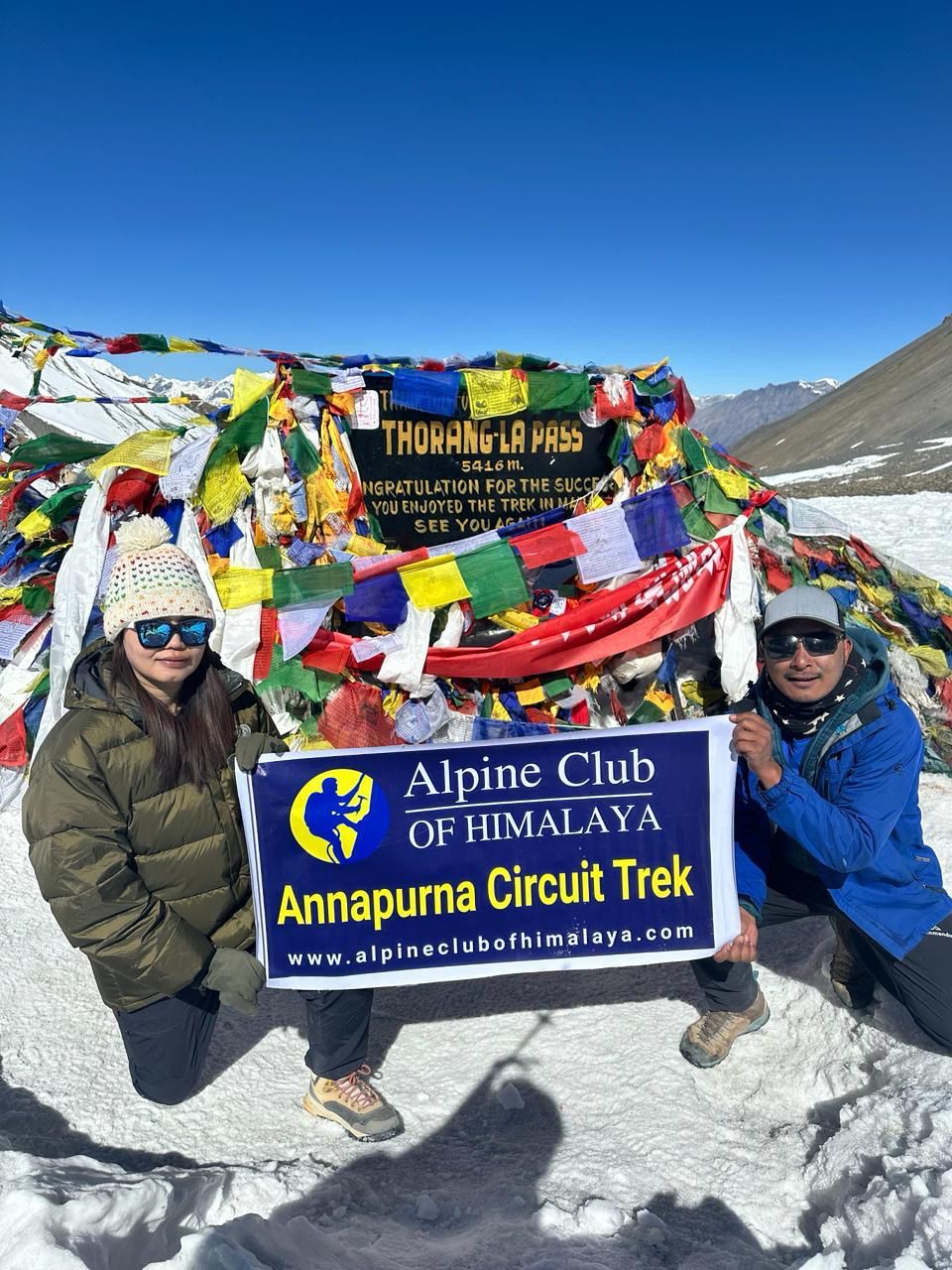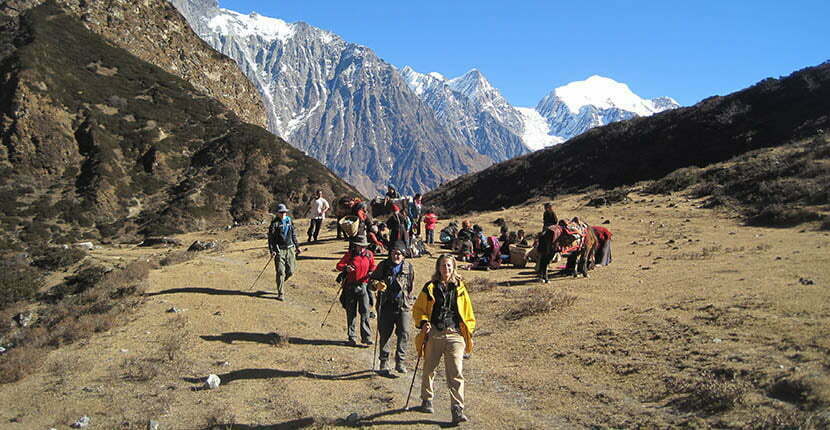Essential Personal Climbing Gear:
- Alpine Climbing Harness
- Crampons
- Ice axe
- Ascender
- Multi-LED Head Lamp
- Karabiners
- Rappel device
- Ski poles
- Slings
- Climbing helmet
Clothing
Upper Body:
- One T-shirt Icebreaker Merino 150 or lightweight 200.
- Two long Icebreaker Merino 150 or lightweight 200 shirts.
- One polar fleece pullover, medium weight.
- One polar fleece jacket.
- One Gore-Tex waterproof and breathable jacket with a large hood to accommodate a climbing helmet.
- Lightweight down jacket for chilly days in base camp or warm layer when stopping for short breaks.
- One very warm goose-down (duvet) jacket with hood or a down/duvet suit if you prefer, for high altitude use.
Hands:
- One pair of lightweight poly-liner gloves.
- One pair of mittens consists of 1 Goretex over mitt matched with the very warm polar fleece mitt liner
Heads:
- Warm hat wool or synthetic that covers your ears
- Balaclava
- Scarf or neck sleeve
- Face mask
- Ball cap or brimmed sun cap
- Glacier Sunglass with side shields
Lower Body:
- One pair of walking shorts for trekking
- Two pair Icebreaker Merino 150 or lightweight 200 thermal bottoms
- One pair of Icebreaker Merino 200-weight thermal bottoms
- One pair of polar fleece trousers
- One pair of Gore-Tex trousers or bibs. Waterproof/breathable with full side zips
- One pair of Goose-down (duvet) trousers or bibs. You may prefer a down (duvet)
Feet:
- One pair One-Sport Millet climbing Overboots or equivalent (with Aveolite liners; good quality plastic shells with inner boots; avoid tight fit with heavy socks.)
- One pair of sturdy leather or synthetic (Gortex) hiking boots with good ankle support for the walk to advanced base camp
- Two Pairs of liner socks. Polypropylene or wool
- Two pairs of lightweight trekking socks, poly or wool
- Light Icebreaker Merino wool or cotton socks for in-town.
Rucksacks and Travel Bags:
- One medium rucksack (50-70 liters / 3000-4500 cubic inches, can be used for airplane carry).
- One large (120 L / 7500 cubic inches) duffle kit bag for clothing and equipment. Must be durable for use on pack porter.
Sleeping Gear:
- For high altitude, one down (duvet) sleeping bag (rated to –25 C (-30 F). In the high camp, you can sleep in your down (duvet) clothing inside your sleeping bag;
-
Private vehicle / Flights
-
Kathmandu, Nepal
-
Kathmandu, Nepal
-
Trekking and climbing
-
March-May and Sep-Nov
Overview
Best time to climb Island Peak?
For the Everest region as a whole, you can trek anytime between September and the end of May. Given the height of Island Peak and the challenging conditions, we work with much smaller opportunities. Bad weather on the BC trek might be uncomfortable, but on Island Peak, it could be very dangerous. For safety climbing to Island Peak, we only run trips in mid-September to November and March to May.
During these periods the temperatures are pleasant and most days are dry and sunny. Importantly during these periods, the strong winds that accompany the monsoon don’t appear and there are long periods of relative calm which are ideal for climbing.
You can read all about it when is the best time to trek in the Everest region generally here and there is a lot more detail about the weather here.
About the route:
The Island Peak climb started following the classic trek to Everest BC (5,380m). The highlight of the first part of the trip is climbing Kala Pattar (5,643m) which has stunning views of the Khumbu ice field, Pumori, Nuptse, Lhotse, and Everest’s north face. It provides great acclimatization for your attempt on Island Peak. If you are planning to climb Island Peak on a private trip you can consider the option of sleeping with an expedition team at Everest BC. This is great fun and also will help with acclimatization.
From Everest BC you head back down the Dudh Kosi valley as far as Dingboche. You then turn up the Imja Khola valley towards Chukhung and Island Peak. Chukhung is the final teahouse stop before heading to BC for the ascent of Island Peak. You can hire all the gears you need for the climb in Chukhung, although the quality is sometimes could be poor here. If you want to be sure of the quality of gears, you have to rent in Kathmandu, but this means a 16 days rent rather than a 4 days rent.
From Chukhung, we provide three days window to attempt the climb. At the first camp after Chukhung you will receive training in all the special techniques you require and have time to practice until you are proficient.
If weather permits, you will move the next day to the high camp to prepare for the summit attempt. If the weather is unpleasant you can stay another day at this camp and wait for the weather to clear. The walk up to high camp is relatively straightforward and you should arrive at camp just after lunch.
From high camp, the ascent becomes steeper and more challenging. Initially, it involves some steep switchbacks and scrambling over the rock before you reach the “crampon point” at the edge of the glacier. Conditions beyond this point have changed a lot in recent years, as a result of climate change and the earthquake in 2015.
Previously, climbers were faced with a straightforward crampon glacier crossing followed by a steep ascent of a headwall of about 150 meters. With a fixed rope set and a jumar, this was a physically demanding challenge but not too technical.
More recently, the glacier traverse has become much tougher, as a number of deep crevasses have opened up which have to be crossed on ladders.
You will have to practice ladder crossings before your ascent, and you will be fully protected by ropes, but this is still a nervy moment as the crevasses are deep and the ladders wobbly. Try your best not to look down!
After that, you have to cross the glacier to reach the headwall. The condition is very variable. Some years it is just frozen snow, but sometimes the snow has blown off leaving hard jagged ice.
In any event, our guides will lay fixed lines over the whole of this section, and with a jumar and ice ax, the climbing is still not overly technical. However, to reflect the overall increased difficulty of the climb in the changing conditions, we now provide 1 guide/climbing sherpa for every 2 people.
Mountains and glaciers are dynamic places, and changes in the landscape are part and parcel of the experience.
After summiting, you descend to Island Peak BC and the rest of the trek follows the classic Everest base camp route back to Lukla via Namche.
Important Note:
Your safety is of paramount importance to us at Alpine Club of Himalaya. We have the absolute authority to cancel the trip or change the itinerary, when deemed necessary or when we have reason to believe your safety is at stake. Weather conditions, the health condition of a group member, natural disasters, and such, can contribute to changes in the itinerary when traveling in remote mountainous regions. In these extreme situations, we kindly request that you offer your full co-operation to the trusted leader of the group appointed by Alpine Club of Himalaya. However, we assure you that we will make every effort to keep to the above itinerary.
Trip Highlight
- One of the shortest climb to Island peak that requires 4 days from Chhukung to summit of Island Peak.
- This package is best and suitable for budget and passionate climbers













